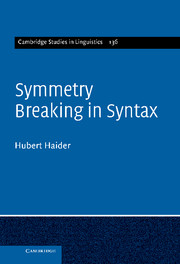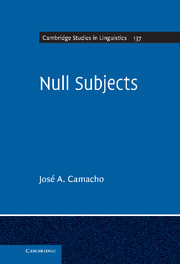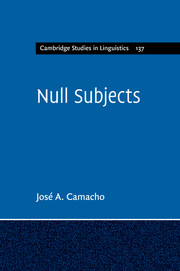Symmetry Breaking in Syntax
In this illuminating new theory of grammar, Hubert Haider demonstrates that there is a basic asymmetry in the phrase structure of any language, whatever sentence structure it takes. Moreover, he argues that understanding this asymmetry is the key to understanding the grammatical causality underlying a broad range of core syntactic phenomena. Until now, Germanic languages have been seen to fall into two distinct classes: those which take an object-verb sentence structure (OV) or a verb-object one (VO). However, by examining the nature of this universal underlying asymmetry, Hubert Haider reveals a third syntactic type: 'Type III'. In particular, he employs the third type to explore the cognitive evolution of grammar which gave rise to the structural asymmetry and its typological implications. Symmetry Breaking in Syntax will appeal to academic researchers and graduate students involved in comparative and theoretical syntax and the cognitive evolution of grammar.
- Proposes a new view of the two main syntactic types of languages: object-verb and verb-object
- Relates the structures of language to its functions in a novel way, namely as the result of adaption by cognitive evolution
- Critically engages with competing theories of syntax
Reviews & endorsements
'Professor Haider's Basic Branching Constraint is a bold solution to the problem of word order and word order correlations in language … should be read and taken seriously by grammarians of all stripes.' Frederick J. Newmeyer, Professor Emeritus, University of Washington
'There's a big idea at the core of this book, that natural languages have only right-branching structures: left-branching structures do not exist. Haider explored this idea in his 2010 Syntax of German, showing that it led to productive analyses for German, but here he takes things to a new level and examines consequences for analyses in a range of languages and compares his proposal to related ideas in other theoretical models.' David W. Lightfoot, Georgetown University
Product details
December 2012Hardback
9781107017757
284 pages
231 × 150 × 20 mm
0.55kg
2 tables
Available
Table of Contents
- 1. What breaks the symmetry in syntactic structures
- 2. Linearizations are public, structures are private
- 3. BBC - asymmetry in phrase structuring
- 4. The cross-linguistic impact of the BBC
- 5. The Germanic OV/VO split
- 6. Adverbial positions in VO and in OV
- 7. Elements of the third kind - resultative predicates and particles - in OV and VO
- 8. Asymmetry in nominal structures - word and phrase structure
- 9. BBC or LCA? - fact finding and evaluation.







